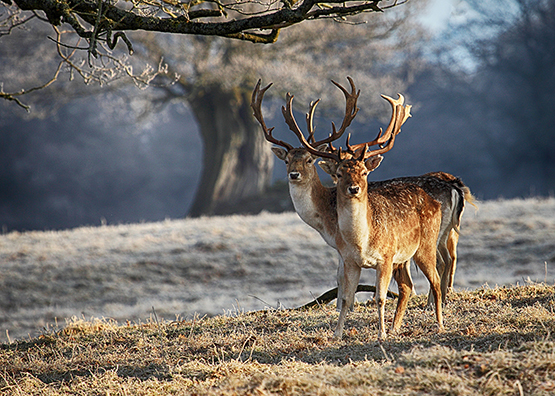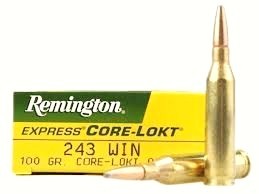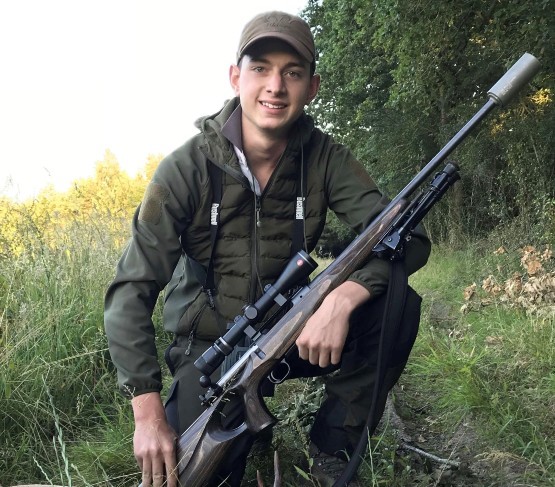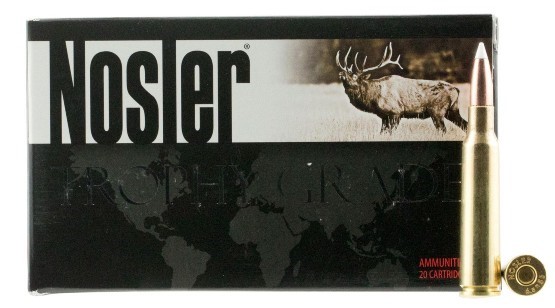Ryan Whatley discusses his favourite choice of calibre and bullet weight for hunting deer in the UK.

The calibre debate has raged for as long as firearms have been in use and opinions about the best calibre and bullet weight for deer hunting, differ widely from hunter to hunter. Personally, I have always been a massive fan of the short action calibres so that is where I will start.
Throughout my deer stalking career, I have tried many different calibres in an attempt to discover the best ‘allrounder’ and a good place to start is with the .243 which is a fantastic round, derived from its older sibling the .308 Winchester.

The 243 has stood the test of time and world-wide has accounted for as many deer and vermin species as any of its rivals. The 243 boasts a flat trajectory and produces around 1800-1900 ft-lbs of energy at the muzzle with a 100gr bullet travelling at around 2900 fps. Ballistics that make it suitable for all six of the UK’s deer species. There is no doubt, the 243 ticks a lot of the boxes, However, a major draw-back for me is that it tends to cause a lot of bruising to the carcass, due to the smaller thinner jacketed bullet causing the meat to become jellified and blood shot, reducing the shot area to dog food. I have also had experience of big fallow traveling long distances after being shot straight through the heart & lungs, so personally I prefer a little more kinetic energy. For me this rules out the .243 as my day to day rifle. With that said, I do find it a fantastic round especially for the smaller deer species, such as roe, muntjac and Chinese water deer.
The next calibre to touch on Is the older brother of the 243, the .308 Winchester. In some respect the 308 is a very similar round, having an almost identical case to the .243 but containing a 7.62mm projectile as opposed to a 6mm projectile. Now as many of you will know, this does have the down fall in regard to trajectory. The 308 projects a 165grain bullet at around 2750-2800fps. Giving the bullet significantly more drop and resulting in names such as the ‘rainbow gun’, due to its very bowed trajectory, this puts a lot of people off of the calibre. However, although the trajectory somewhat differs to rounds such as the 243, do not let this put you off. Using the correct ammunition, it’s possible to make it a lot flatter, but with that comes more meat damage. ‘UNLESS’ you use something such as a Hornady 125 grain gmx or the Barnes 130 grain ttsx. These lead-free alternatives need more speed than lead to get them to mushroom correctly. As they are full copper and a lot harder than something such as a Sierra Game King. In turn I have heard fantastic results from people using the Barnes 130 grain ttsx a lot faster than a conventional lead bullet and has the plus side of a nice and flat trajectory. In my personal opinion, this makes it one of the top rounds on the market. Shooting a ‘heavy for calibre’ bullet, causes minimal meat damage when using conventional ammunition containing lead, but also produces maximum kinetic energy and in turn second to none terminal performance. This gives the 308 many of the attributes I have been looking for in a ‘go-to rifle’.

(Above: Despite his young age Ryan has substantial deer stalking experience and has worked as a guide for some high profile deer stalking outfitters including Jelen / PWS Premier Wildlife Services)
But of course, we must not overlook the long action calibres, one of which is the fabulous .25-06 Remington. This calibre is very personal to me, as it was the calibre I first began shooting with and the first calibre with which I took my very first deer. As such, it would only be fair to admit that I am slightly bias in favour of this calibre, a calibre that boasts a very flat trajectory that propels a 120 grain bullet at just under 3100fps. Giving around 2550 ft/lbs of muzzle energy at the muzzle. But although these statistics may sound good, there is a down fall to this type of ballistic performance and that is, like the .243 the associated meat damage.
Because it is a middle weight bullet being sent very fast this causes the bullet to have a less controlled and more violent expansion, due to the bullets fairly frangible nature. BUT again, bullet choice is important, using a Barnes TTSX copper bullet I have found there to be a lot less meat damage. Shooting a 100gr bullet at just under 3300 fps. I have found it to produce a normal .25 calibre sized entry wound with a 50 pence sized exit wound. What I have also found very impressive is the fact that there is very little bruising to the carcass even when the bullet has gone through bones such as the ribs or touched the back of a shoulder. For these reasons, the .25-06 really does demand the utmost most respect. Having used it in in all environments and having taken deer from all parts of the country with it, ranging from the biggest red stag to the smaller muntjac and plenty of fallow, I have always found the 25-06 to be an absolute asset.
 The last calibre I wish to consider is another very old round that has stood up to world wars. The 6.5x55 Swedish. This calibre really has impressed. Being able to propel 95 to 160 grain bullets and custom range of ammunition, it is widely used by deer stalkers and hunters across many different countries. Again, I have really put this ‘old and faithful’ through its paces and shot in some really challenging environments. When using the 6.5 I favoured bullet weights between 120 and 130 grains. My first batch of ammunition I used, was 129 grain Hornady sst’s. These bullets where very accurate but devastating to the meat, so I decided to try something different and although normally for less meat damage, I would put the bullet weight up to something such as a 140 grain bullet and run it very slow, I decided to actually drop to a 120 grain Nosler ballistic tip. This bullet was my bullet of choice in the 6.5x55 as it gave a lovely flat trajectory and very little meat damage, with maximum penetration through foliage and still fantastic knock down power. For these reasons I have to say, that in this format the 6.5 really ticks all the boxes for shooting in the UK and having tried a good number of alternatives, it is definitely the one I will be sticking with.
The last calibre I wish to consider is another very old round that has stood up to world wars. The 6.5x55 Swedish. This calibre really has impressed. Being able to propel 95 to 160 grain bullets and custom range of ammunition, it is widely used by deer stalkers and hunters across many different countries. Again, I have really put this ‘old and faithful’ through its paces and shot in some really challenging environments. When using the 6.5 I favoured bullet weights between 120 and 130 grains. My first batch of ammunition I used, was 129 grain Hornady sst’s. These bullets where very accurate but devastating to the meat, so I decided to try something different and although normally for less meat damage, I would put the bullet weight up to something such as a 140 grain bullet and run it very slow, I decided to actually drop to a 120 grain Nosler ballistic tip. This bullet was my bullet of choice in the 6.5x55 as it gave a lovely flat trajectory and very little meat damage, with maximum penetration through foliage and still fantastic knock down power. For these reasons I have to say, that in this format the 6.5 really ticks all the boxes for shooting in the UK and having tried a good number of alternatives, it is definitely the one I will be sticking with.
To read more about the 6.5x55 Swedish and other calibres simply follow this link: rifle-calibres



















